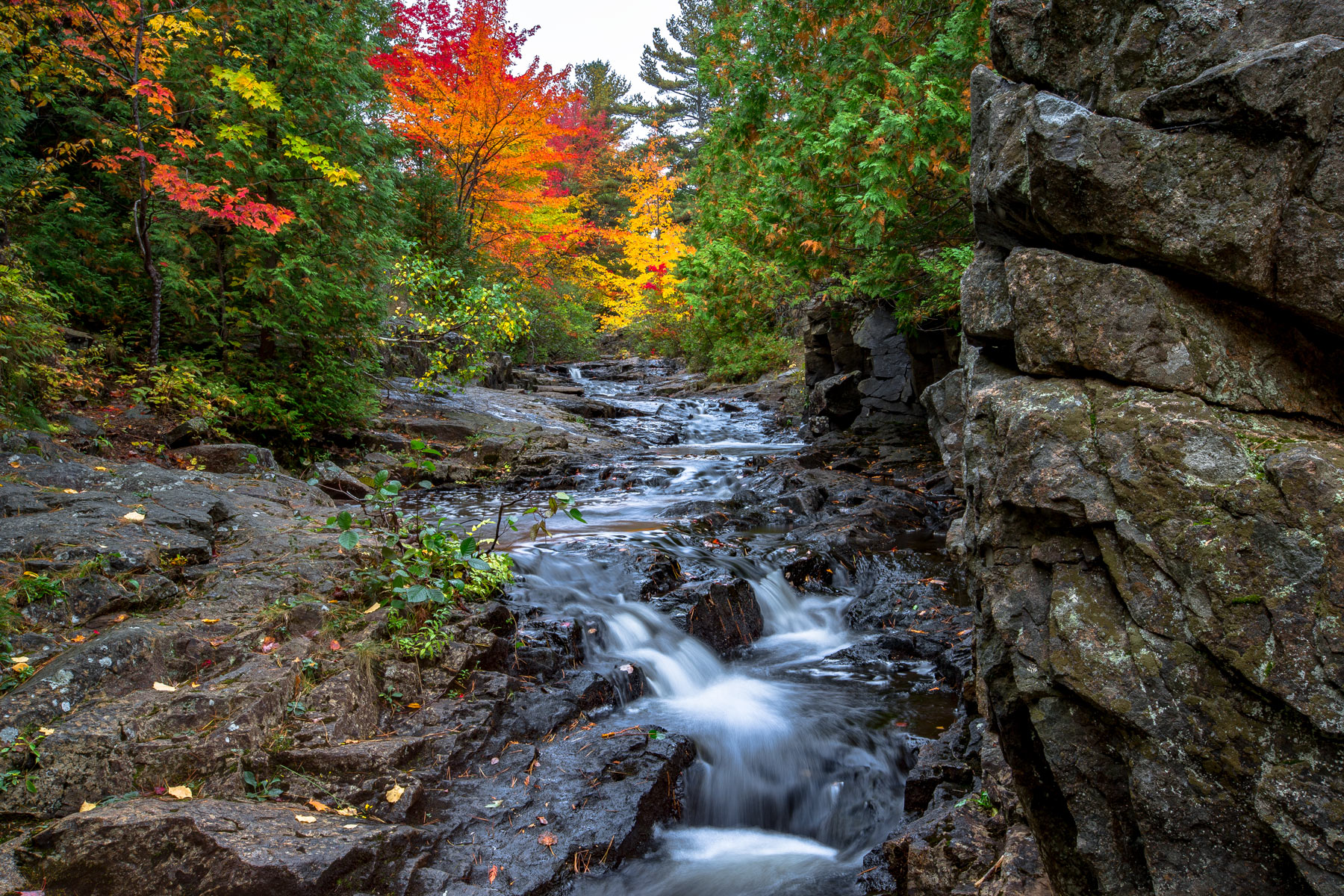
Acadia National Park is the only national park in the northeastern United States and a true coastal wonder. Nestled into the far-flung, rocky coast of Maine, Acadia National Park is home to majestic forests, tranquil ponds, rounded mountains, and wild coastline.
Once a summer retreat for America’s elite, the area making up Acadia National Park was given back to the people by conservation-minded locals led by George Dorr. Now you can visit this coastal paradise and marvel at it’s expansive beauty.
Acadia is a special park and a must for anyone who loves wild coastline. Maine’s wild coast is unlike any other in the U.S., speaking as someone who’s been to the shores of Olympic National Park, Acadia takes the cake for pure coastal beauty in my book.
On top of it’s famous rocky coast, Acadia is home to beautiful forests of maples, aspen, and pine that truly come alive in the fall – making the park a world class autumn destination.
Crowds at Acadia
If you’re wondering how crowded Acadia is considering it’s the only national park in the region – well the answer depends of course on when you visit. The summer can see swarms of crowds and cars in the park, particularly at Cadillac Mountain, Jordan Pond, and along the coast.
The fall sees the summer crowds depart and the arrival of the leaf-peepers from destinations far and wide (Bar Harbor sees regular cruise ships). That being said the inner portions of the park and its trails see far fewer crowds and can be visited most any time of year.
To find out when, where, and why to go to this coastal wonderland – read on!
About My Travels to Acadia National Park
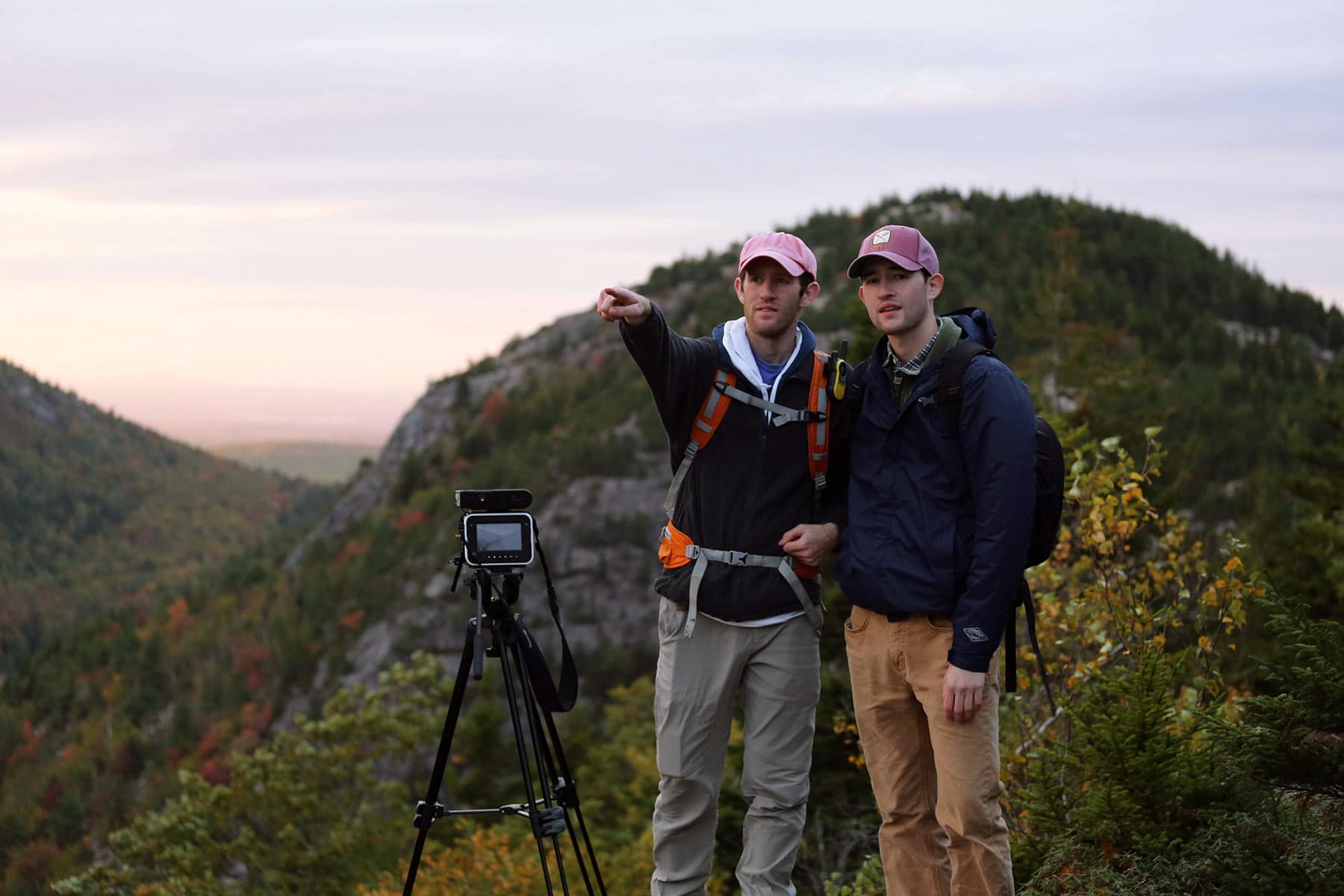
Making the Film
I first traveled to Acadia with my brother Will and a friend back in 2015 to capture the park during peak fall color. Fall peaked right around the second week of October that year and offered spectacular scenery.
The nights were cold and the morning frost was a bit unkind after a night spent in a tent, but the views and the good times are some I still reminisce about.
The fall color here was absolutely spectacular, some of the best I’ve ever seen – and believe me when I say I’m somewhat of a fall color connoisseur. Wildlife is a bit of a non-event in Acadia if you’re hoping for big game, but the park is home to a thriving bald eagle population as well as beavers and foxes.
Acadia Keeps Me Coming Back
I’ve been to Acadia in every season now and am well-acquainted with all that the park has to offer in each one. What keeps me coming back is the beauty of the place and its uniqueness. Walking along the rocky shores gives one a sense of the power of nature and an admiration for the area that can’t be replicated.
After you’ve had your fill of coast you can head into the park’s interior trails or charming carriage roads to experience the famed woods of Maine that poets and artists can’t get enough of. Yes Acadia is special and we’re very fortunate it was conserved for us to enjoy.
Acadia National Park Guide
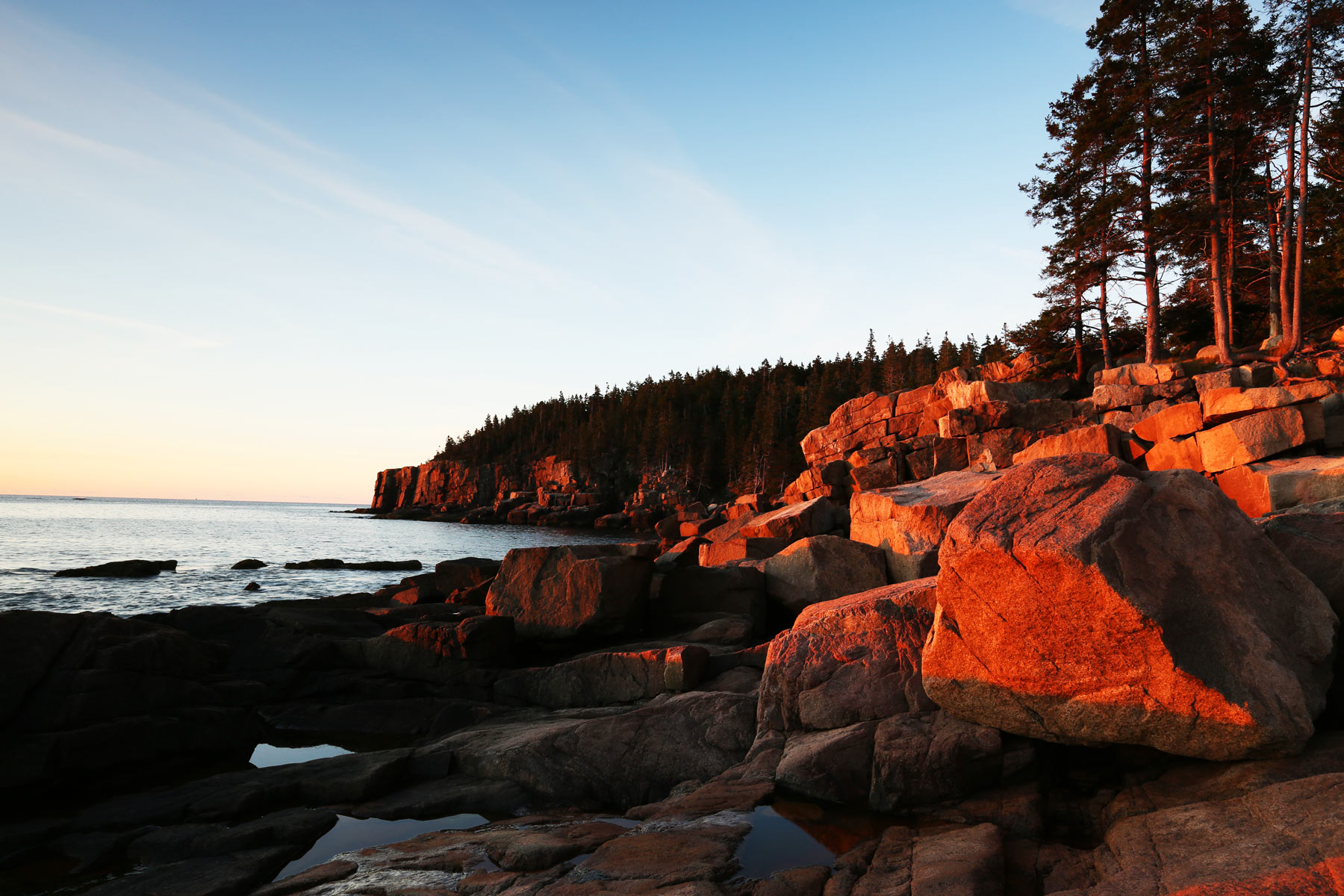
About Acadia National Park
Sculpted by glaciers and landscaped by beavers, Acadia National Park is full of wonderfully unique natural features. Rounded mountains, tranquil ponds, rocky coastline, & some of the most beautiful trails in the national park system comprise this marvelous coastal Maine wonder.
Things to Know Before You Visit Acadia
Entrance Fees: $30
Getting Around: Acadia is a very accessible park with roads taking visitors through much of the park. Most any vehicle will do throughout the park and prepare for some scenic driving! The park does get very busy in the Summer so be prepared for long lines of cars in various areas and limited parking.
Sunscreen: Visiting national parks during certain times of the year can mean lots of sun. Seriously, some of these parks can zap you if you don’t wear sunscreen. We happen to like this one because it works AND it’s not full of a bunch of chemicals.
Leave No Trace: We’re big fans of Leave No Trace, here at MTJP. Want to learn more? Read about the seven principals of Leave No Trace here.
Insect Repellent: You hope not to need it, but you want to have it. We typically bring an Eco-Friendly Insect Repellent with us just in case.
Dogs are not allowed on trails in most national parks due to their potentially disruptive presence with the natural ecosystem. The basic rule is they are allowed where cars can go so be sure to check the rules before bringing along your furry friend.
Acadia National Park Facts
Location: Maine
Established: January 19, 1929
Size: 49,075 acres
Visitors: 3,437,286 (2020)
Entrance Fees: $30/vehicle
The History of Acadia National Park
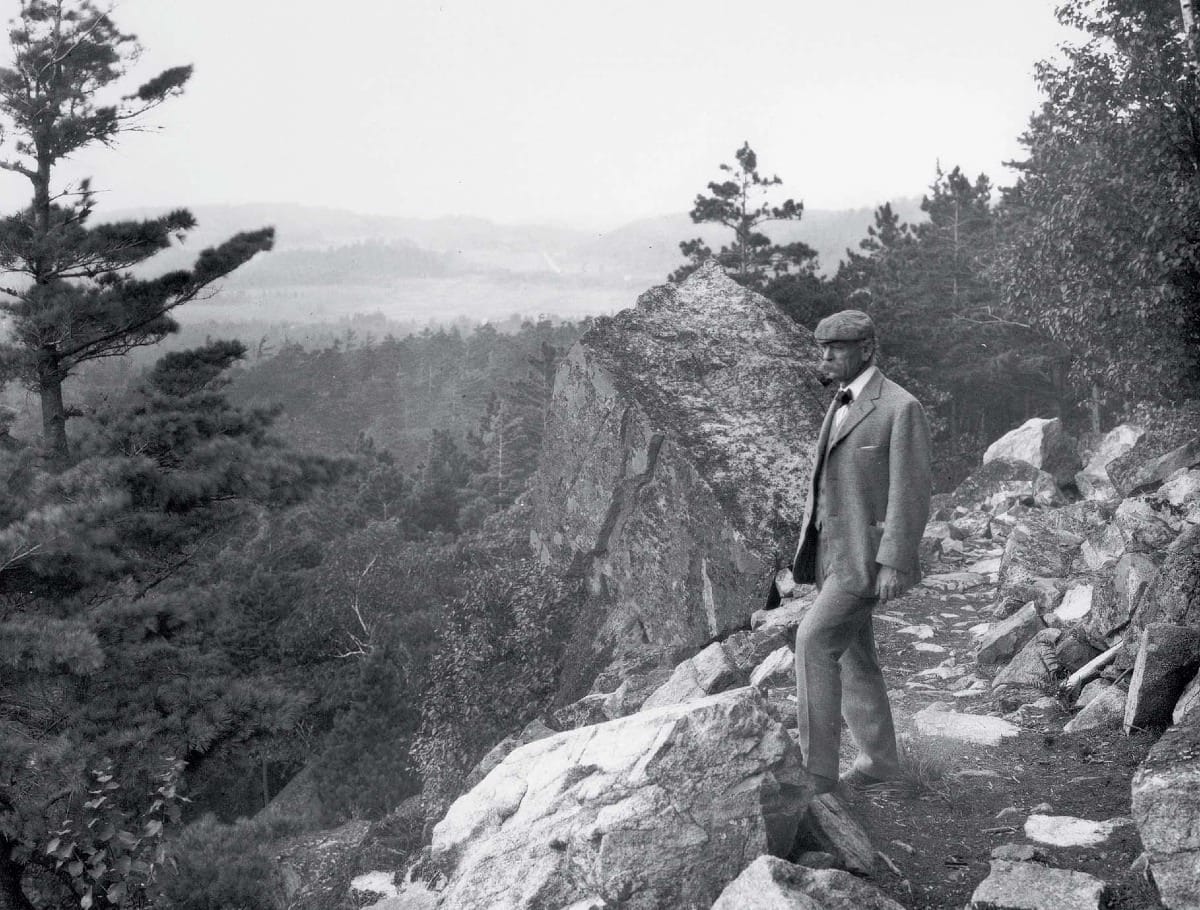
Like so many other national parks, the story of Acadia is about the foresight and generosity of one person. For Acadia National Park that man was George Dorr. Having first visited the area as young boy in 1868, Dorr quickly fell in love with the area.
His wealthy parents built a home there in the ensuing decade and lived next door to Harvard University President Charles William Eliot. After Eliot’s son (also Charles), an early conservationist and famed landscape architect, floated the idea of protecting the area as a nature preserve of some kind Dorr spurred to action and spearheaded the campaign to create Acadia National Park.
Saving the Land for Acadia
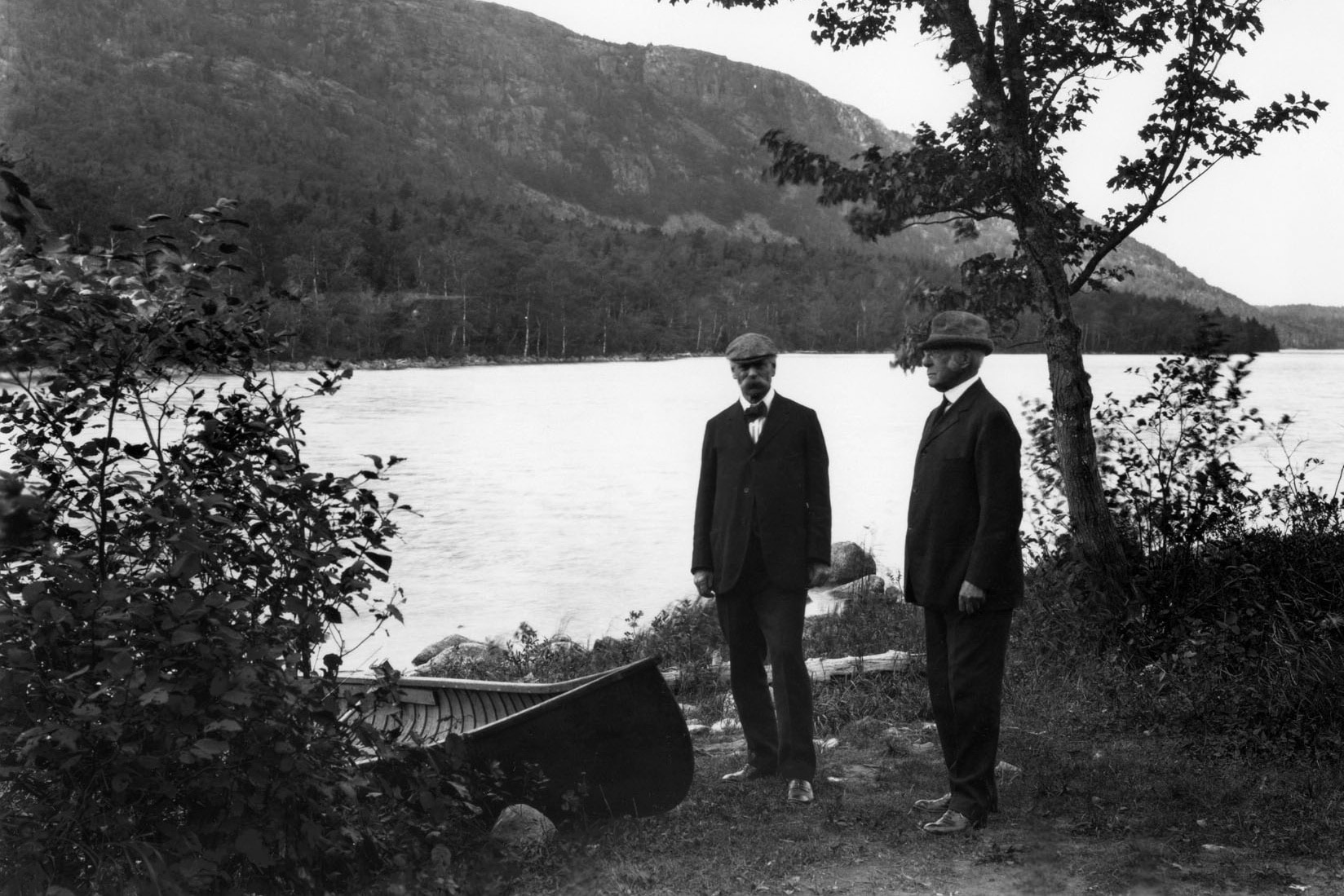
George Dorr, Charles Eliot, and others established the Hancock County Trustees of Public Reservations in 1901 for the purpose of “…acquiring, owning and holding lands and other property in Hancock County for free public use.”
Dorr spent most of his own fortune to acquire the land around Mt Desert Island, and along with generous donations from others The Hancock County Trustees eventually amassed over 6,000 acres.
The Maine Legislature eventually caught wind of what was going on and some in the legislature didn’t like the Trustees removal of so much property from potential taxation and tried to revoke the Trustees non-profit status.
This would have ensured the land was too expensive for Dorr and the Trustees to keep preserved. Dorr traveled to Augusta and fought the legislation tooth and nail and eventually defeated the measure. Dorr was keenly aware that the area needed federal protection to truly save it.
Establishing the Park
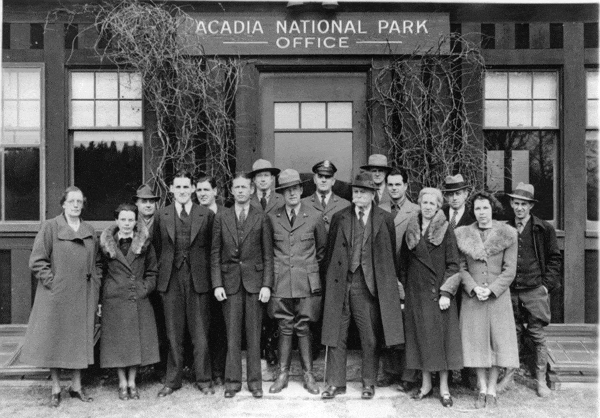
After substantial wrangling Dorr managed to present 5,000 acres of land to the federal government in 1916 and President Woodrow Wilson created Sieur de Monts National Monument.
Full park status came three years later after Dorr led the acquisition of more land and President Wilson signed the act creating Lafayette National Park. The park’s first superintendent was none other than George Dorr.
Several roads were built and the Schoodic Peninsula was added to the park in 1929, the same year the park changed its name to Acadia National Park in honor of the original French settlement that included Maine.
Acadia National Park Map
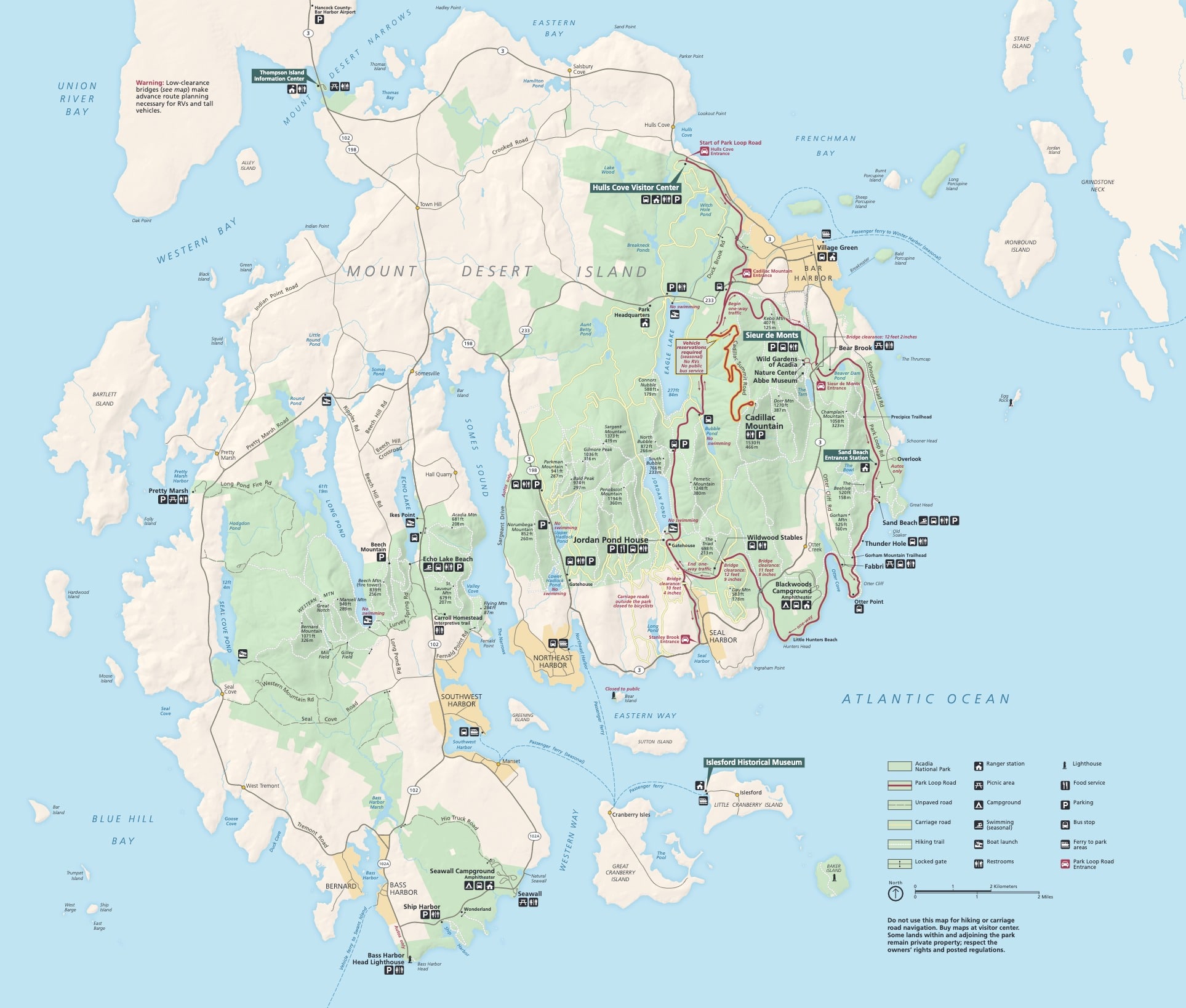
Where is Acadia National Park?
Acadia National Park is nestled along the rocky northern coast of Maine. The park is about an hour and a half southeast of Bangor, ME.
Getting to the Park – Directions & Location
Acadia National Park is located in the Down East region of Maine along the northern coast around the small tourist town of Bar Harbor.
Closest Airport: BGR – Bangor International Airport (Bangor)
The fastest way to get to Acadia National Park of course depends on where you’re coming from, but it’s probably safe to say it’s by flying into Bangor. From Bangor you can rent a car and be in Acadia in an hour and a half without trouble.
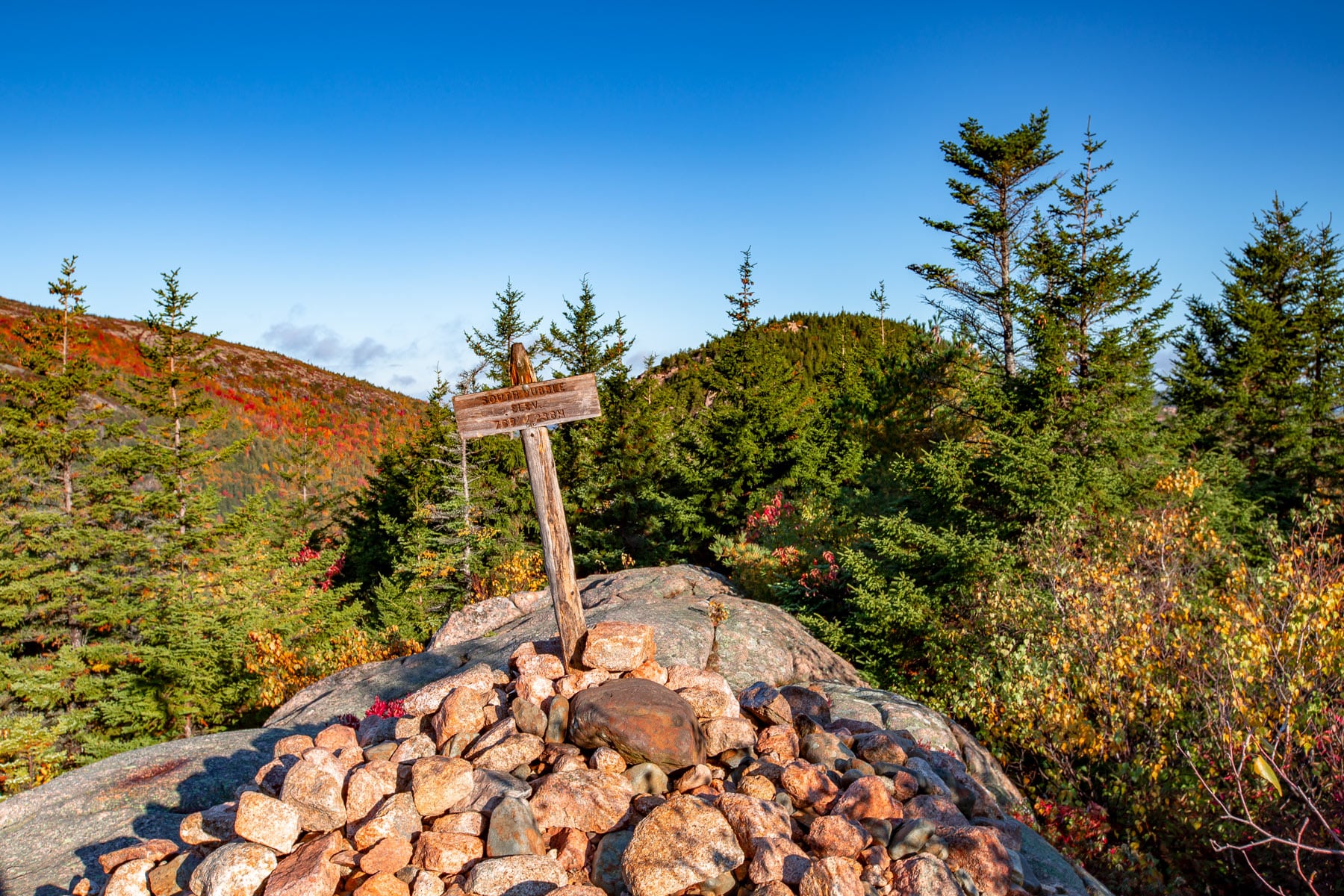
Navigating the Park
The Hulls Cove Visitors Center is located off of Paradise Hill Road just outside of downtown Bar Harbor. From there there are a number of ways you can explore the park, the most common being through the Cadillac Mountain Entrance Station and continuing through the park from there.
The nearby town of Bar Harbor is known for it’s lobster, or “lobstah” as the locals say it. There you’ll find an array of lodging and dining options. These can fill up pretty fast during the busy tourist season which may mean you’ll have to stay in nearby Ellsworth or even Bangor.
This is New England so keep your eye out for the perfect bed & breakfast for you and your travel companions to experience some true Down East hospitality.
Popular Roads
Park Loop Road (Hwy 240) is the main park road and will take you to many of the destinations on your park map.
Maine State Route 102 is the main road on Mount Desert Island and will dip in and out of the park taking you to many of the points of interest on your map.
Maine State Route 3 follows the eastern shore of the Atlantic through the town of Bar Harbor, then continues south through Acadia National Park to the village of Northeast Harbor.
Things to Keep in Mind
The park is relatively small and is located in and around a number of towns where people live and work. Acadia is a unique park that coexists with a number of small communities that are intertwined within, and without the park. Be respectful of the people who live here and be sure to stop in and support local businesses.
Bar Harbor is a major tourist hub. The town of Bar Harbor, right next to the park is a significant tourist hub in the area for both domestic and international travelers. The port of Bar Harbor welcomes nearly 200 cruise ships a year and relies of tourism as a main source of income.
This means in the busy season the area can be quite crowded and lodging can be difficult to come by. With proper planning, you can take advantage of the wonderful amenities of Bar Harbor in the season that is right for you and have a wonderful visit to Acadia National Park.
Lobstah! Need I say more?! This area of Maine is internationally-renown for its world class lobster fishing and of course eating. You can’t miss the boiling cauldrons outside lobster pounds throughout the area. Don’t hesitate to stop in and try the best lobster in the world straight from the source!
Video
Synopsis
MTJP | Acadia is the culmination of several weeks spent exploring Acadia National Park during peak fall color. The film is dedicated to George Dorr, who was instrumental in saving the land and founding the park. Journey with us as we explore this magnificent coastal wonderland in stunning fall color.
Acadia Weather & Seasons
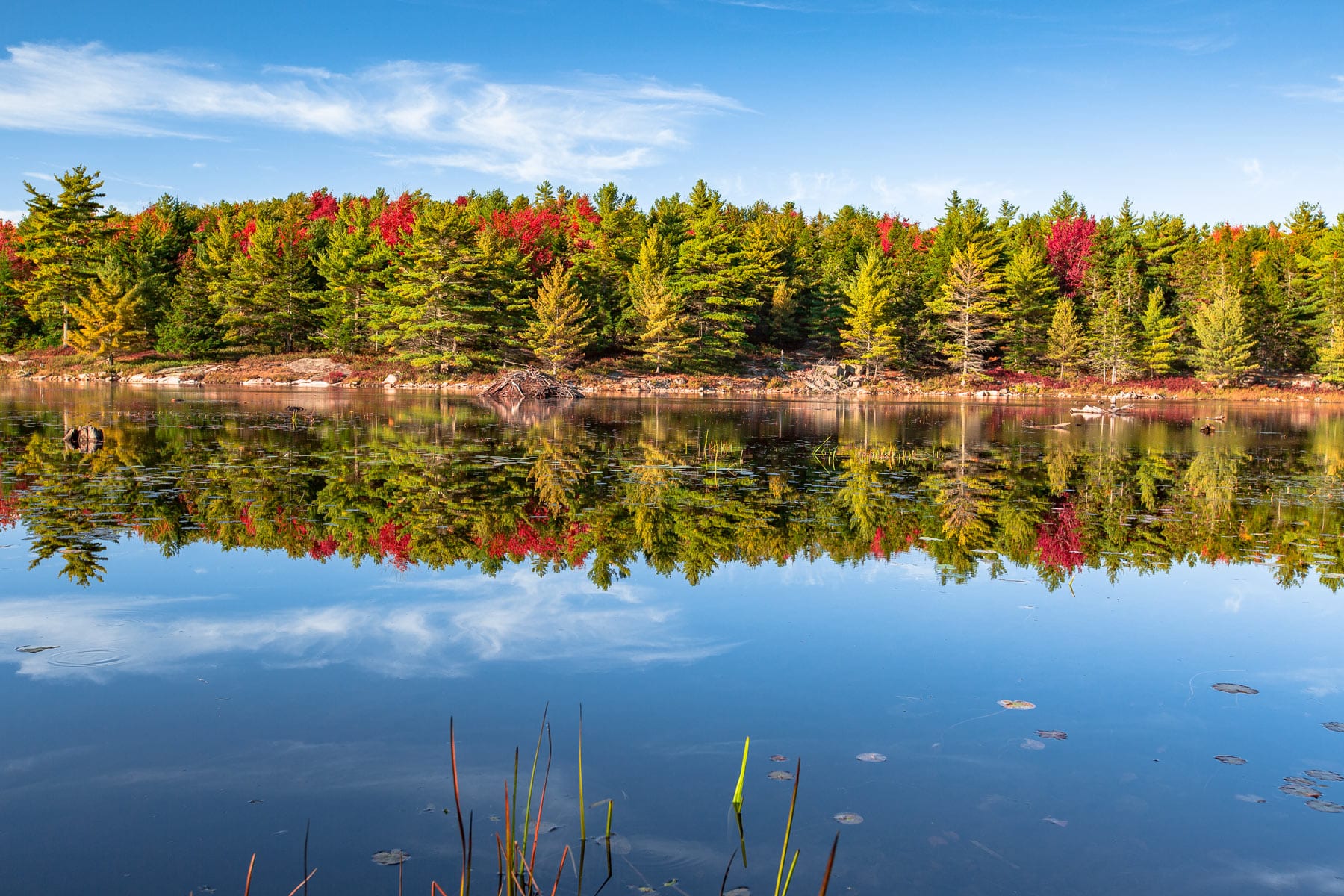
Knowing when to visit Acadia National Park is critical to making the most out of your trip to this beautiful eastern US national park. Each season brings it’s own unique opportunities and potential challenges. Luckily I’ve seen it all so I’ll give you the low-down on the best and not-so-best times to visit.
Best Time to Visit Acadia National Park
The best time of year to visit Acadia National Park is September & October when the park displays it’s magnificent fall foliage. The secret is out so you won’t be the only one visiting this fall tourist destination, but the views and natural splendor will be well worth navigating any crowds.
Acadia National Park Seasons
Spring in Acadia National Park
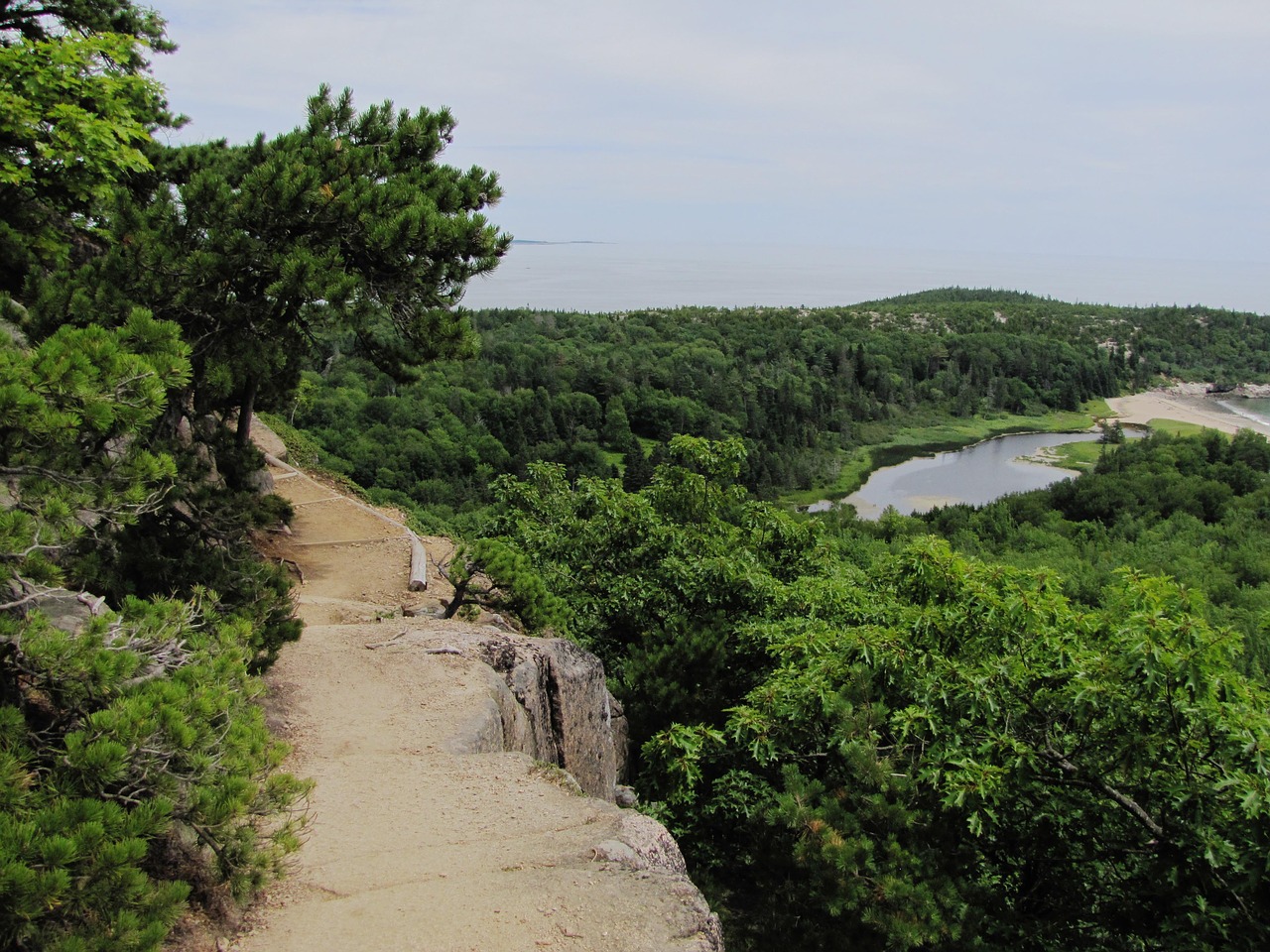
Spring in Acadia sees temperatures between 30-70 degrees and visitors can expect some rain. Visibility tends to be low as fog lingers throughout much of the days.
Ticks and other biting critters are very active this time of year and precautions need to be taken to avoid getting bit. Even with proper precautions be sure to check your clothing and skin after hiking as ticks can spread dangerous diseases.
All that said, late Spring is a great time to avoid the crowds in Acadia and enjoy some nice weather. The typically crowded beaches and coast areas are calm and quiet. This is a great time to go if you’re looking for some solitude.
Summer in Acadia National Park
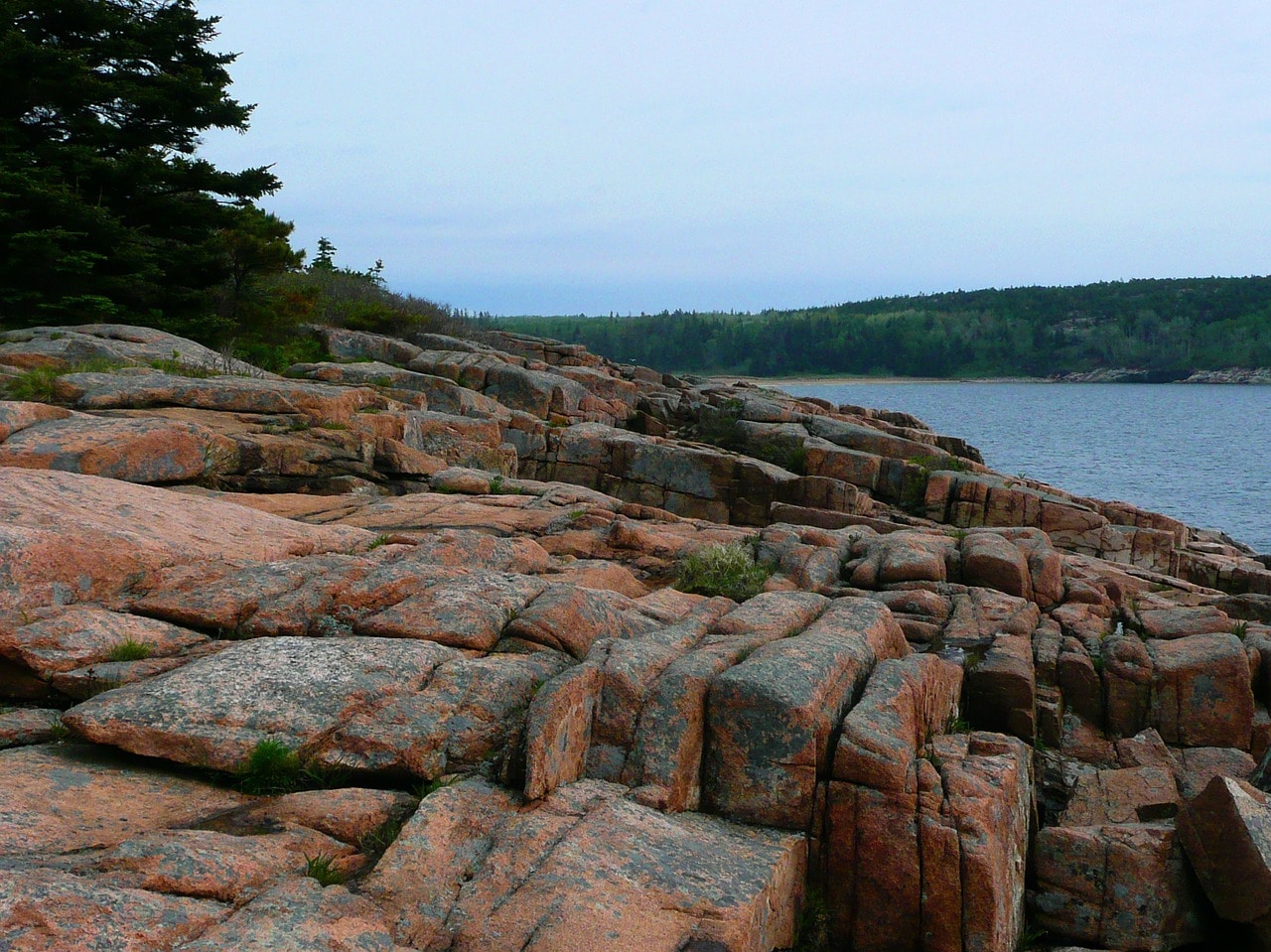
Summer in Acadia is marked by beautiful weather and lots of crowds. The park’s beaches and coastal areas tend to be swarmed with tourists looking for their share of the ocean and parking can be difficult to come by in some areas. Jordan Pond is also characterized by throngs of people and extremely limited parking.
That said, the park’s carriage roads and the Schoodic Peninsula area tend to be great ways to get away from the crowds and enjoy the immense beauty of the park.
Note: Mosquitoes and all manner of biting bugs can be pretty bad in the woods of the park at this time so come prepared!
Fall in Acadia National Park
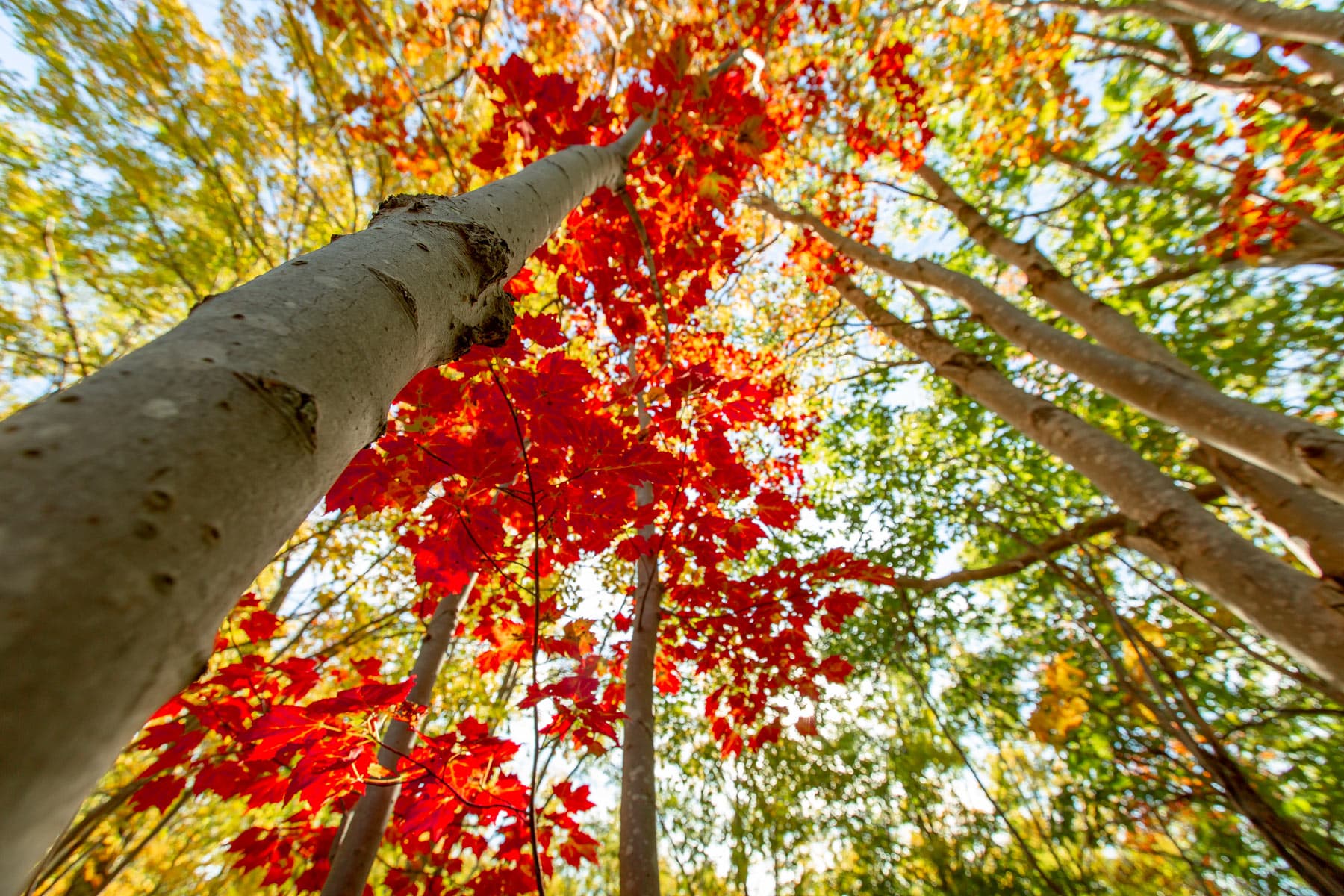
Fall is showtime in Acadia when the trees put on their stunning displays of color and air is cool and crisp. Early fall is particularly pleasant as summer tourists have faded and the temperatures haven’t cooled too much.
This makes September a great time to visit. From October onward the park’s temperatures start to really drop to very chilly lows making the prospect of camping a bit tougher, but the scenery is still fantastic.
Note: Fall is not devoid of crowds in Acadia as the leaf-peepers know this is a world-class destination. That said, if you can’t beat ’em, join ’em. Acadia is spectacular this time of year!
Acadia National Park in Winter
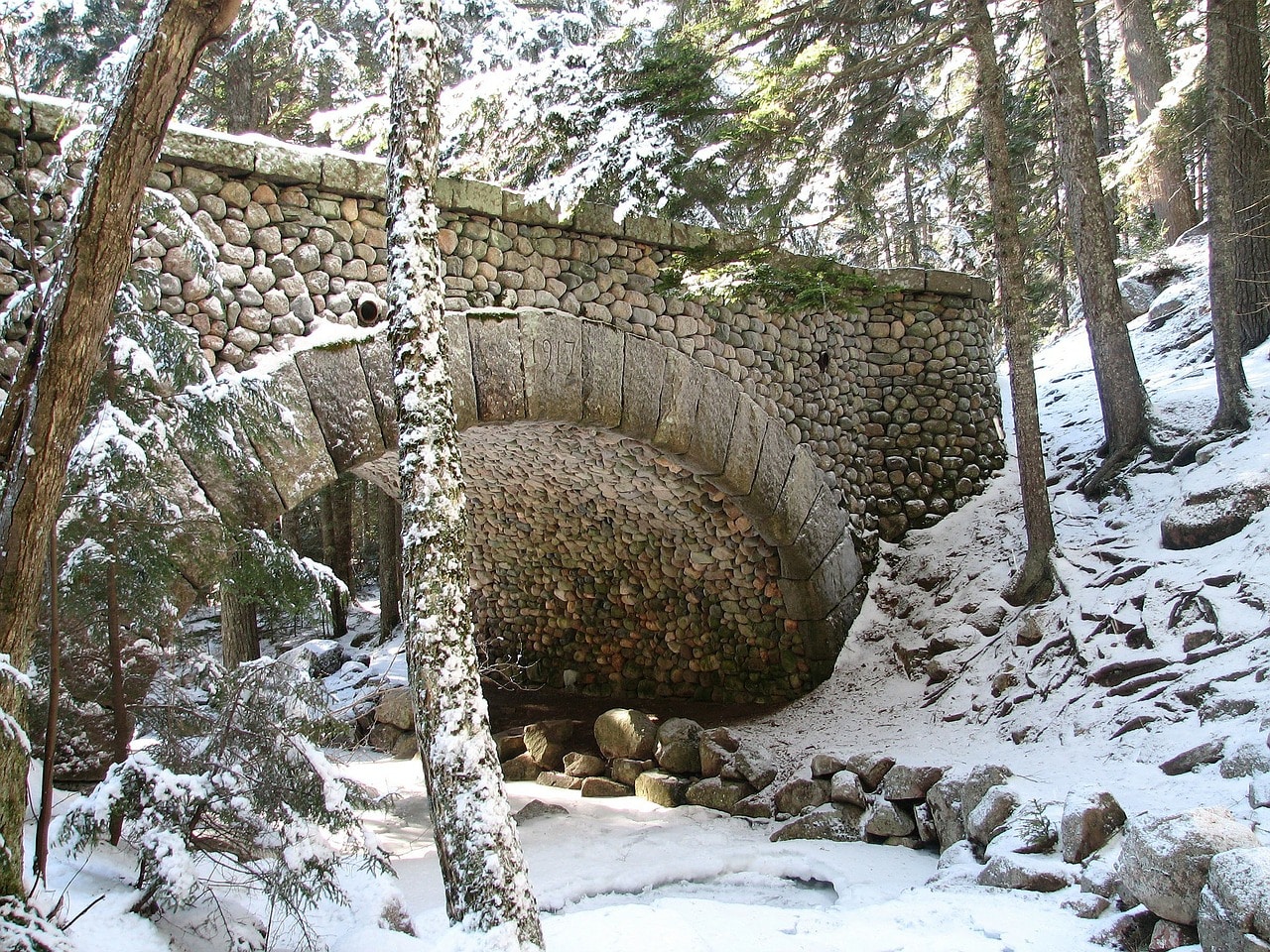
Winter here sees low temperatures, snow, and low visibility. Temperatures range from the low teens to the low 30’s with occasional winter storms closing many of the park’s roads. Winter activities include snowshoeing, cross country skiing, snowmobiling, and even dog sledding.
If you don’t mind snow and cold weather and want to beat the crowds this can be a great time to visit.
Best Things to Do in Acadia National Park
1. Go Leaf Peeping

Get over the moniker and embrace your inner leaf peeper because Acadia is an autumn wonderland. A devastating fire in 1947 actually gave birth to most of the park’s deciduous trees which now make it a premiere fall destination.
Now you can hike the trails and carriage roads of the park and delight in the park’s rebirth. The Bowl, Bubble Rock, and Jordan Pond are some of the best places to experience and photograph the park’s incredible colors.
2. See the Sunrise Before Anyone Else in the U.S.

Hustle up to the summit of Cadillac Mountain (an easy drive) early in the morning to settle into your spot and watch the sun greet the United States for the first time. Then text all your friends and wake them with a cool photo because you’re now better than them.
Note: Reservations are now required to drive to the summit of Cadillac Mountain. Check the park website or call before your visit!
3. Hike the Beehive Trail – If You Dare
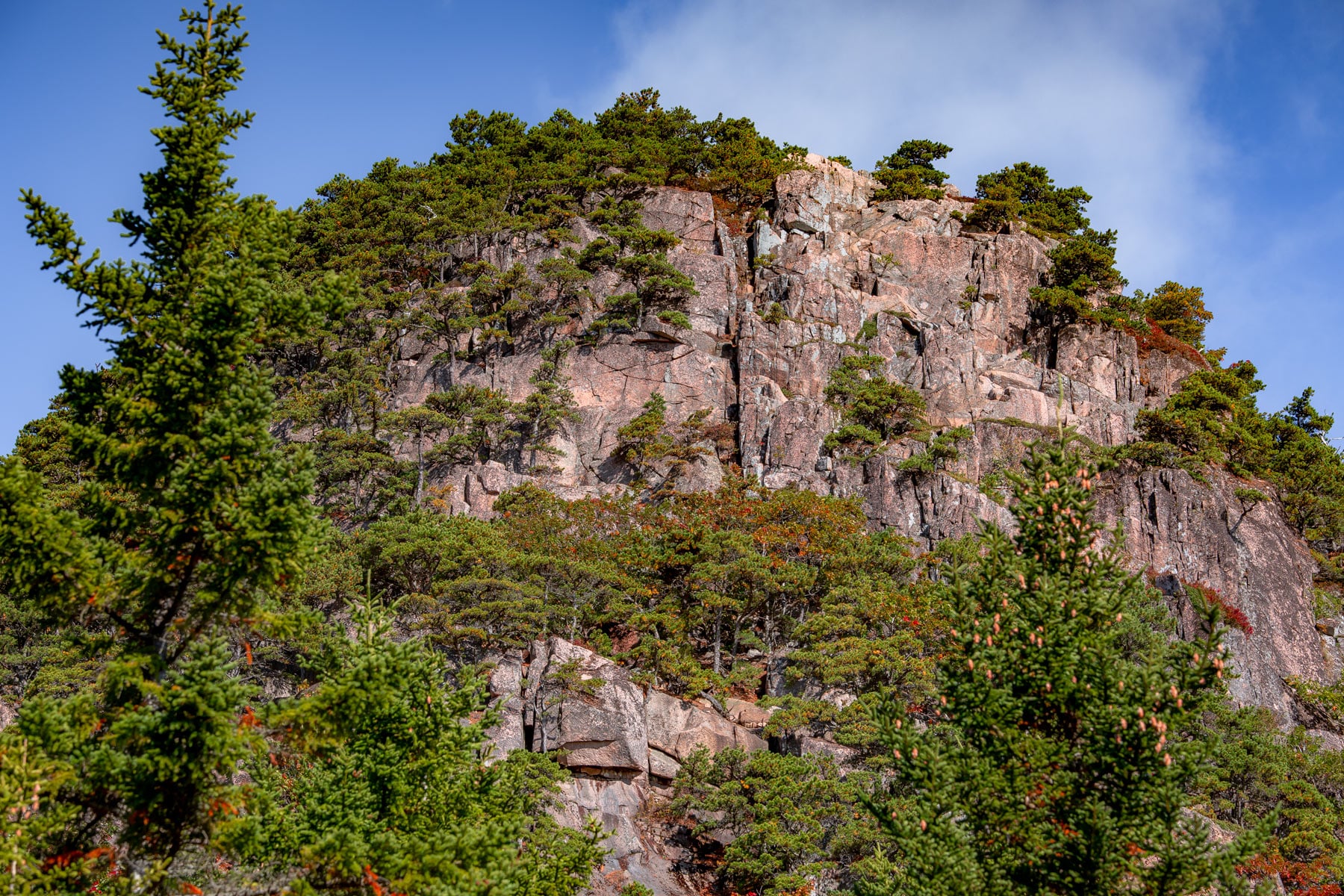
This unique and challenging trail up the south face of the Beehive is not for the faint of heart. Part of the hike involves climbing straight up the rock face using iron rungs and scrambling with and without handrails.
For those physically fit and without a fear of heights it’s a one-of-a-kind national park experience that rewards thrill-seekers with a fantastic view of the park and the Atlantic below.
4. Catch the Sunset at the Bass Harbor Lighthouse
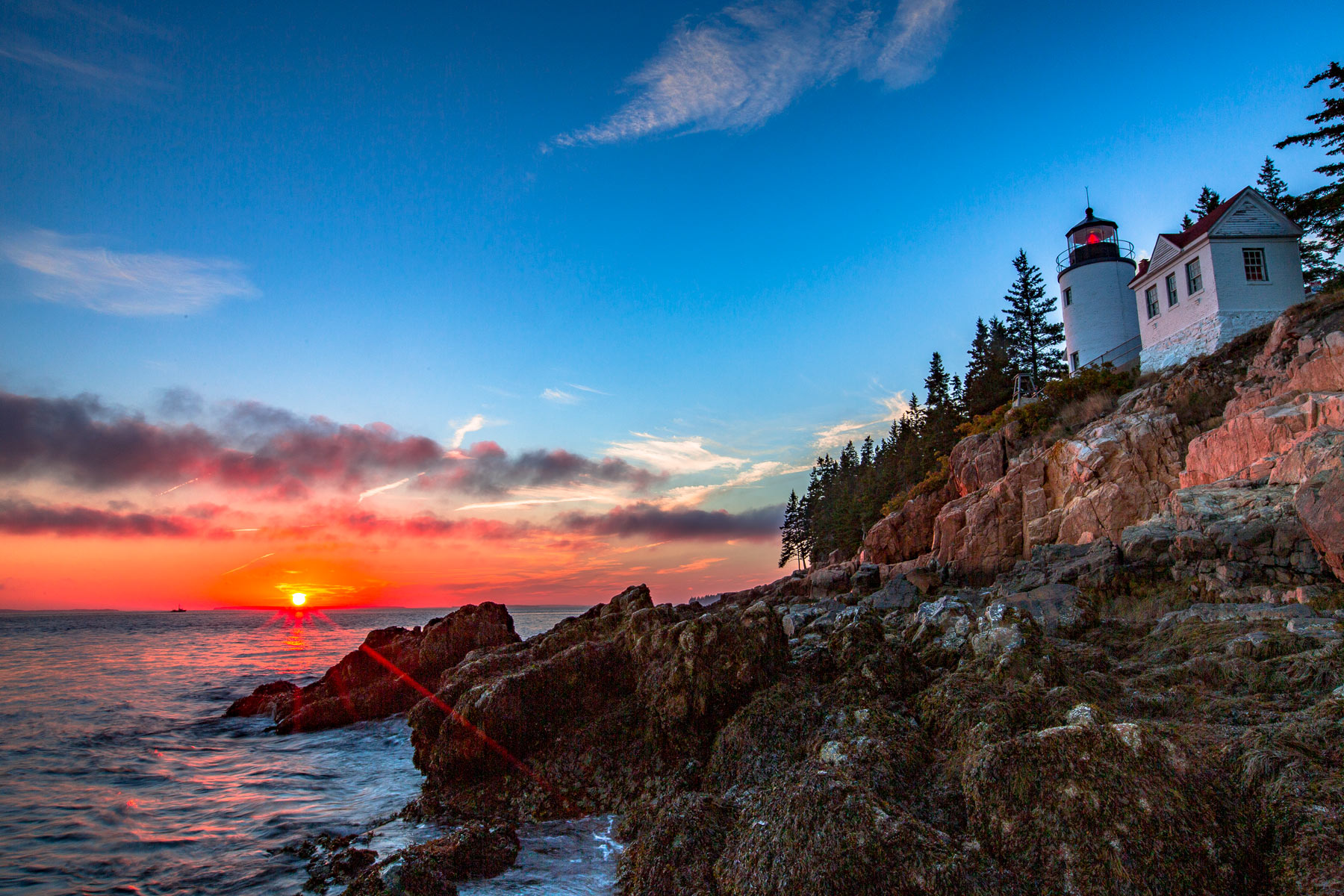
This iconic lighthouse is probably the most recognizable feature of the park. Since the park was established tourists and photographers have come to marvel at the iconic white New England-style lighthouse protruding from the rocky cliffs of Maine’s easternmost coastline.
If you want to get a good picture here, good luck! Sunset is the best time for that iconic photo, but in the summer and fall the good areas to photograph from are swamped with tourists from nearby cruise ships and tour buses looking for that same iconic shot.
Note: The Bass Harbor Head Light is in a separate section of the park not near the rest of the park's attractions so make sure you plan accordingly.
5. Explore the Schoodic Peninsula
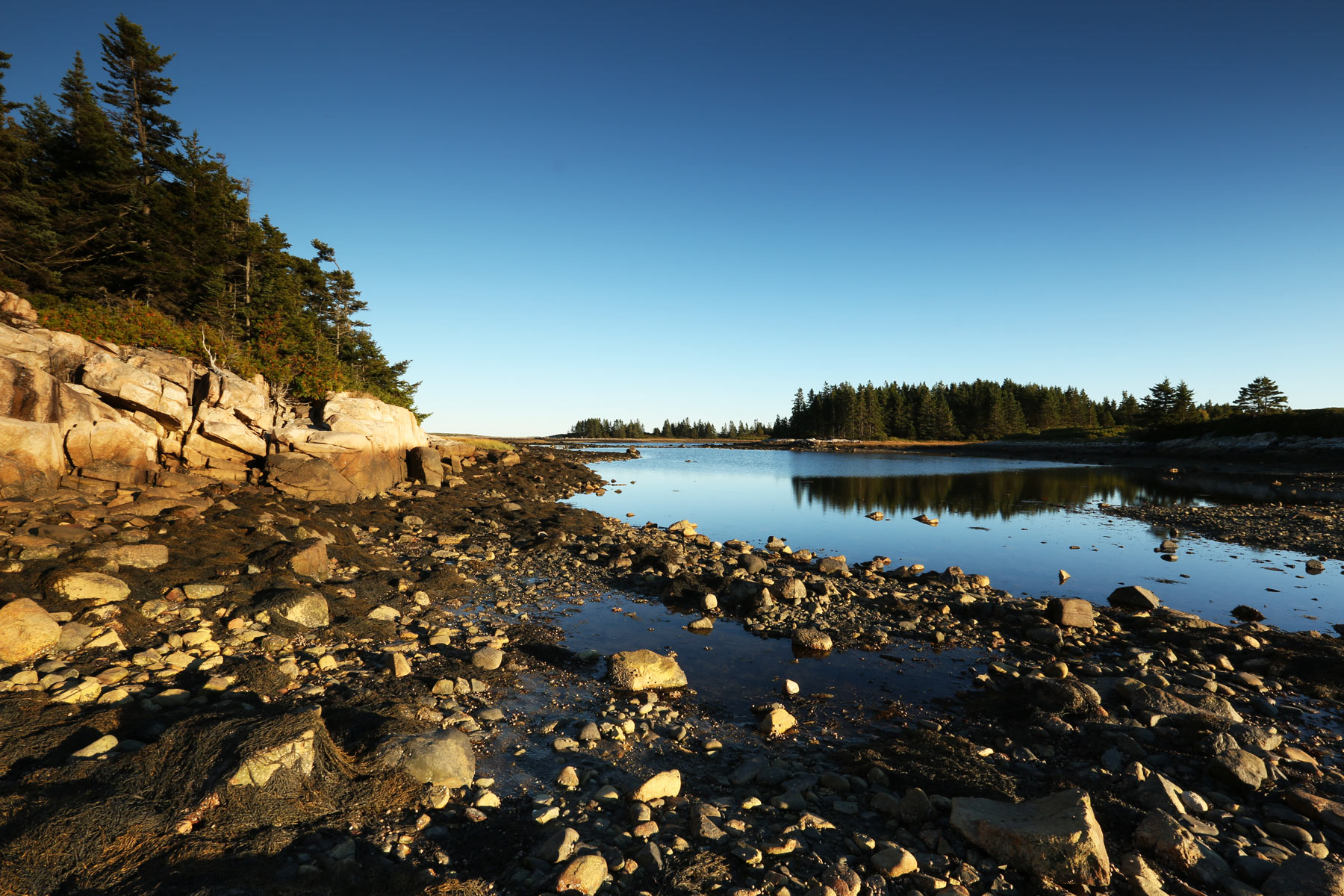
While much of Acadia can get crowded in the more popular months, the Schoodic Peninsula is typically quiet and devoid of the park’s usual bustle. Here you can hike and explore in relative peace amongst beautiful evergreens and mossy forests or the rugged coast.
The Schoodic area is also home to a beautiful state-of-the-art campground set away from the park’s other buzzing campgrounds.
Where to Stay – Camping & Lodging
Camping in Acadia
Acadia National Park has a whopping ten campgrounds, each offering a different type of camping experience. On top of this the park also offers backcountry camping for those looking for a more primitive and quiet experience.
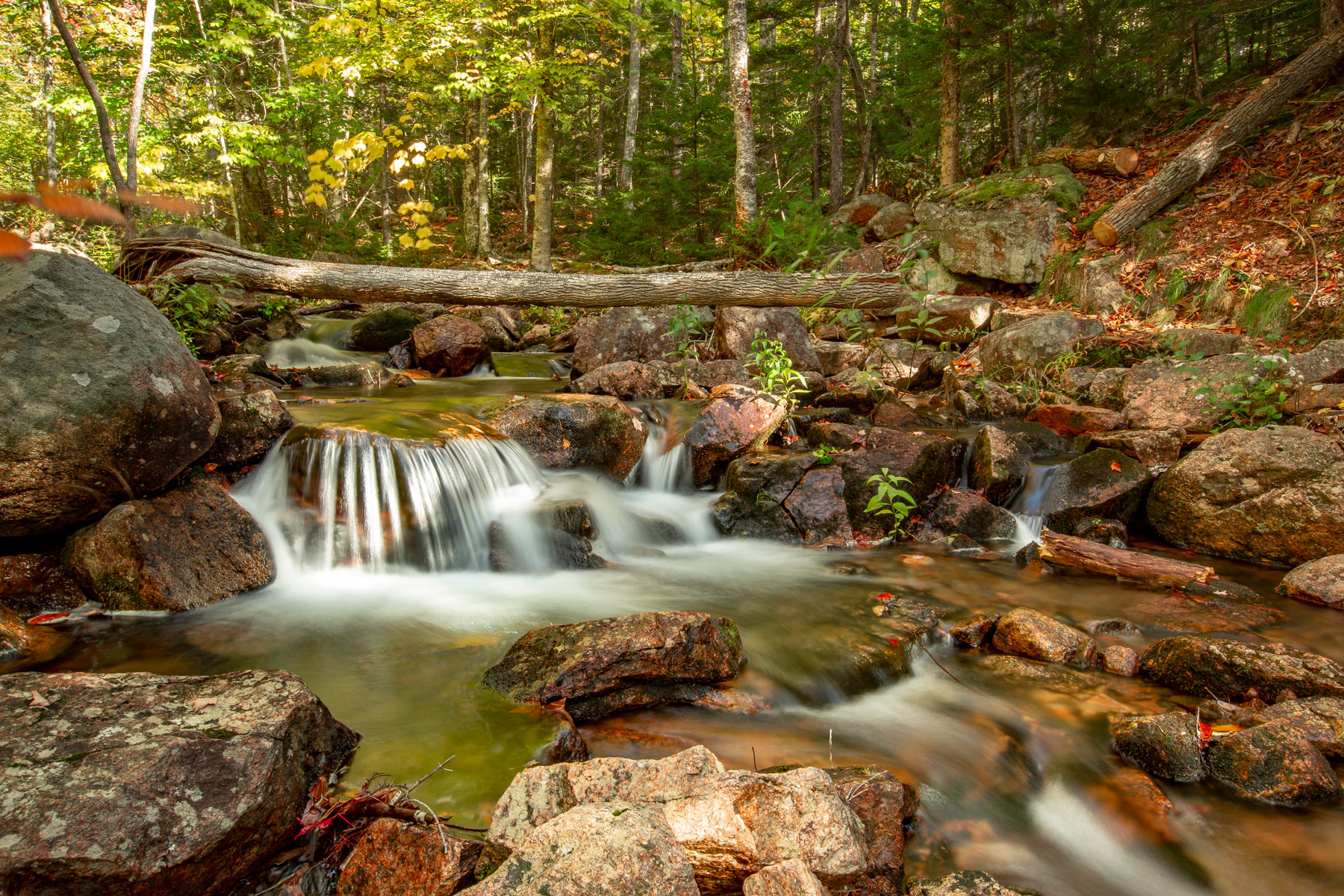
Campgrounds
Acadia National Park has four campgrounds, each offering a different type of camping experience.
Duck Harbor Campground is the most remote and primitive campground in the park. Located on Isle au Haut, this campground is only accessible by boat. You must have a reservation to camp at one of the campground’s 5 primitive sites. Open from May 15 – October 15.
Seawall Campground is a what we might call a full service campground with flush toilets, running water, picnic tables, and fire rings provided. The sites are reservable 3 months in advance and are located in a quiet wooded part of the park with easy walking access to the coast. There are shower facilities and a camp store located a mile away. Open late May to early October.
Blackwoods Campground is a popular wooded campground located on the coast halfway between Bar Harbor and Northeast Harbor. The campground has flush toilets, running water, picnic tables, fire rings, and RV dump stations. Regular sites are $30. Open early May to mid October.
Schoodic Woods Campground is a relatively new campground and has terrific facilties including flush toilets, running water, picnic tables, fire rings, and RV dump stations. The campground is located on the more remote and quiet Schoodic Peninsula and provides a more peaceful setting away from the hustle and bustle of the park and Bar Harbor. The campground is open late May to mid October. Visit the park website for more information on campgrounds and camping.
Lodging in Acadia
Acadia National Park is located near Bar Harbor, a major tourist destination in the region, providing numerous lodging options. Be sure to plan ahead of time to avoid potential headaches. For tent options see our camping section above.
Lodging options around the park include:
- The Inn on Mount Desert (Bar Harbor)
- Bar Harbor Inn (Bar Harbor)
- Acadia Hotel – Downtown (Bar Harbor)
- Bass Cottage Inn (Bar Harbor)
- Balance Rock Inn (Bar Harbor)
- Bar Harbor Grand Hotel (Bar Harbor)
- Atlantic Oceanside Hotel (Bar Harbor)
- Harbour Cottage Inn (Southwest Harbor)
Restaurants in Acadia
The nearby town of Bar Harbor is a major tourist hub in the region and offers plenty of top notch dining options. Did we mention it’s also home to the best lobster in the world? Yes here in Bar Harbor and the surrounding area you’ll find lobster everywhere.
A great place to start is a lobster pound, these are no-frills restaurants that serve fresh caught lobster, you’ll notice them by their steaming cauldrons outside and the satisfying smiles on their customers faces.
You’ll also find plenty of upscale New England dining and small stores serving local blueberry baked goods and great local dishes. There are a number of great places to grab a bite to eat close to the park, I’ve linked the most popular ones below:
- Peekytoe Provisions (Bar Harbor)
- Side Street Cafe (Bar Harbor)
- Project Social Kitchen & Bar (Bar Harbor)
- Beal’s Lobster Pier (Southwest Harbor)
- Charlotte’s Legendary Lobster Pound (Southwest Harbor)
- Thurston’s Lobster Pound (Bernard)
- The Travelin Lobster (Bar Harbor)
- Acadia Lobster & BBQ Co (Trenton)
- Trenton Bridge Lobster Pound (Trenton)
My Favorite Spot in Acadia National Park
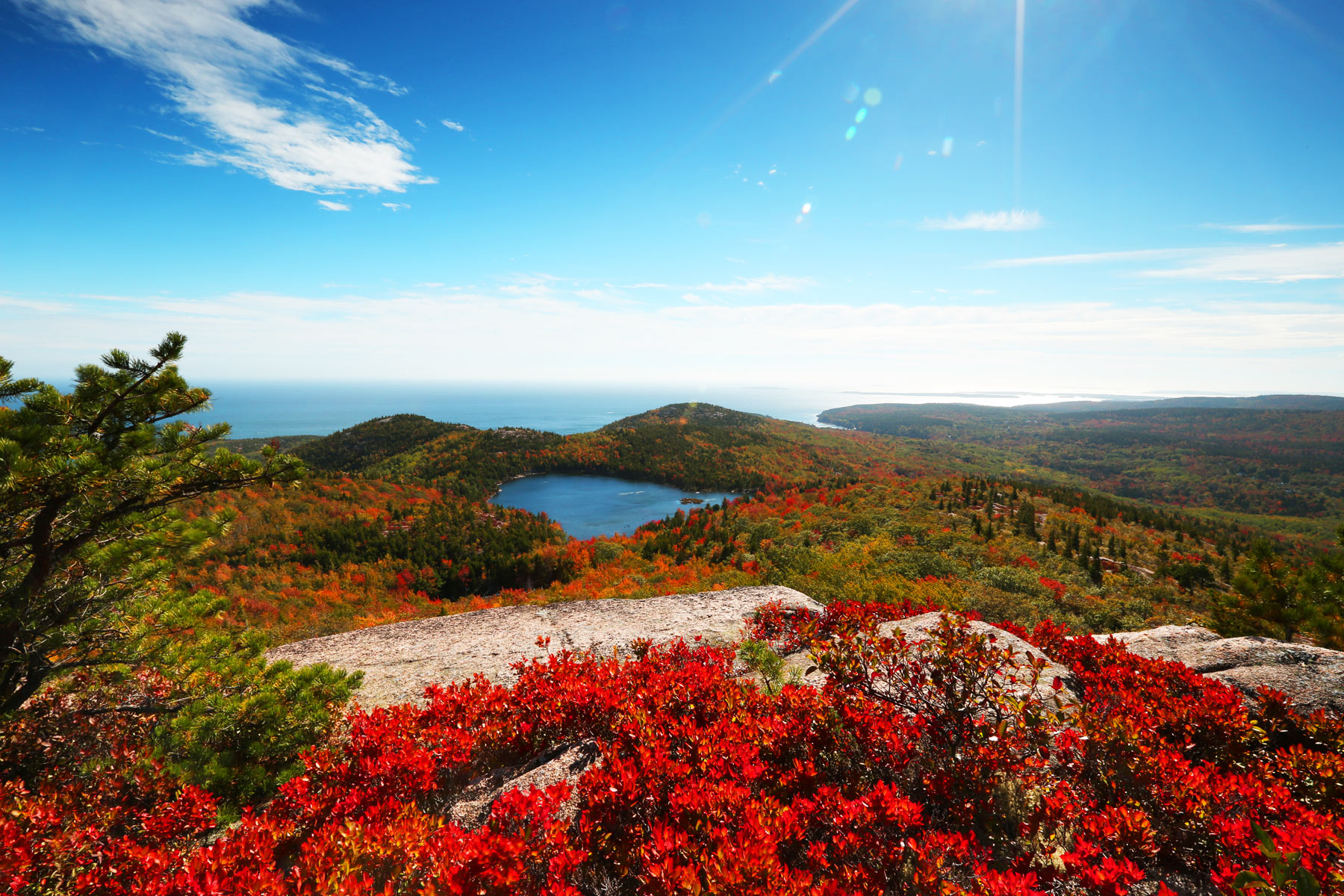
The Bowl tends to be a bit of an afterthought on many visitors Acadia itinerary. I’m here to tell you that’s crazy!
Getting there requires a 1.5 mile hike up a moderate incline which is actually enough to deter most visitors who are on tight schedules from cruise ships and tour buses.
Once there you are greeted by a beautiful lake draped in some of the most spectacular fall color you’ll find anywhere.
Walk the shores of the lake and along the wooden boardwalks through the surrounding forest and immerse yourself in this Acadian paradise. You’ll come upon babbling brooks littered with red maple leaves. You may even spot the handiwork of the masterful engineers of the park – beavers! Bring a lunch and make a day of it up here.
There are trails spreading out in every direction, many of which will take you to unparalleled views of the park and the Atlantic far below.
Photo Gallery – Acadia National Park
Photos from the production of our Acadia Film.
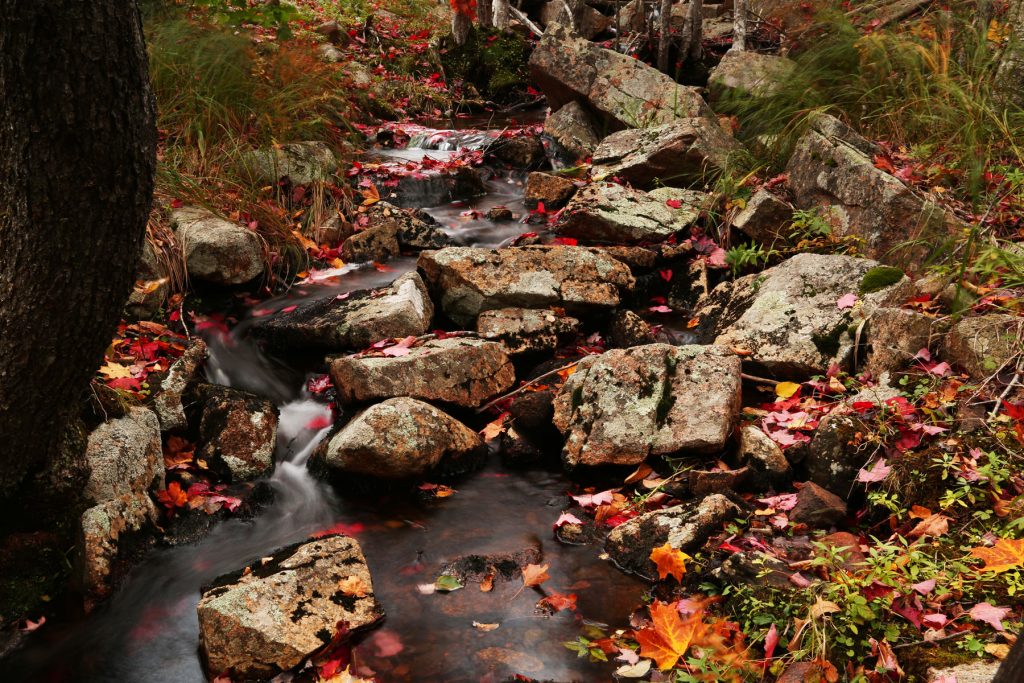
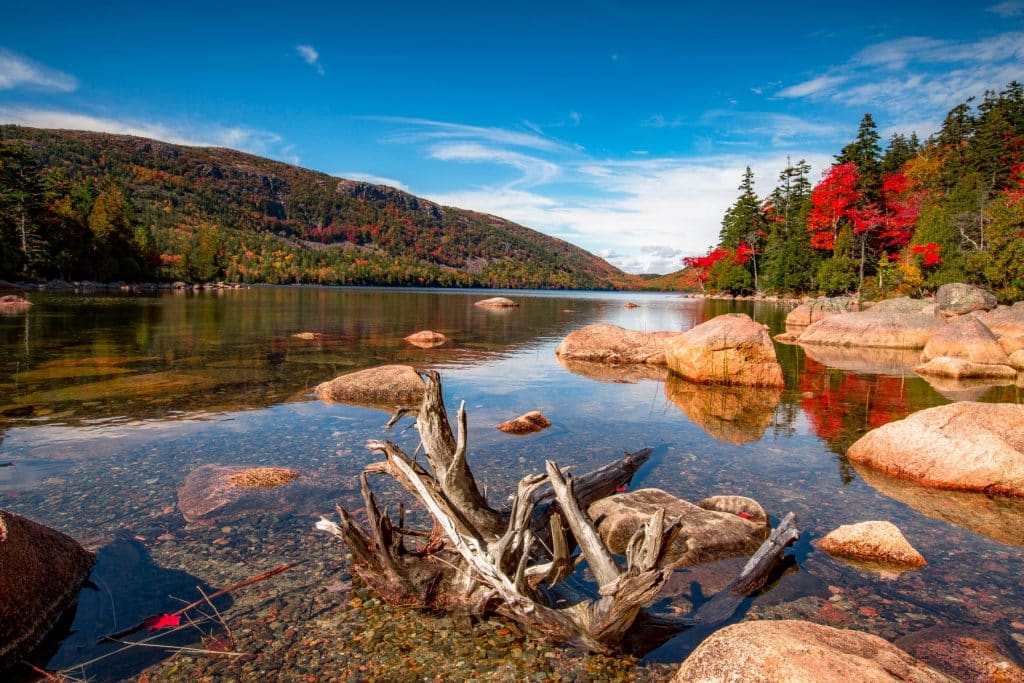
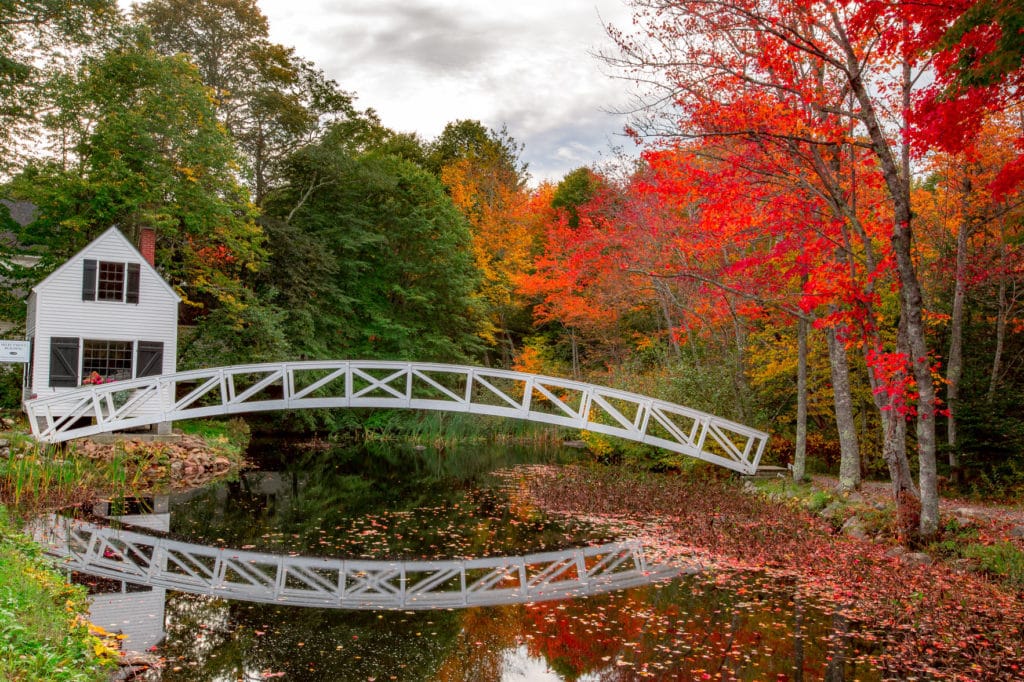
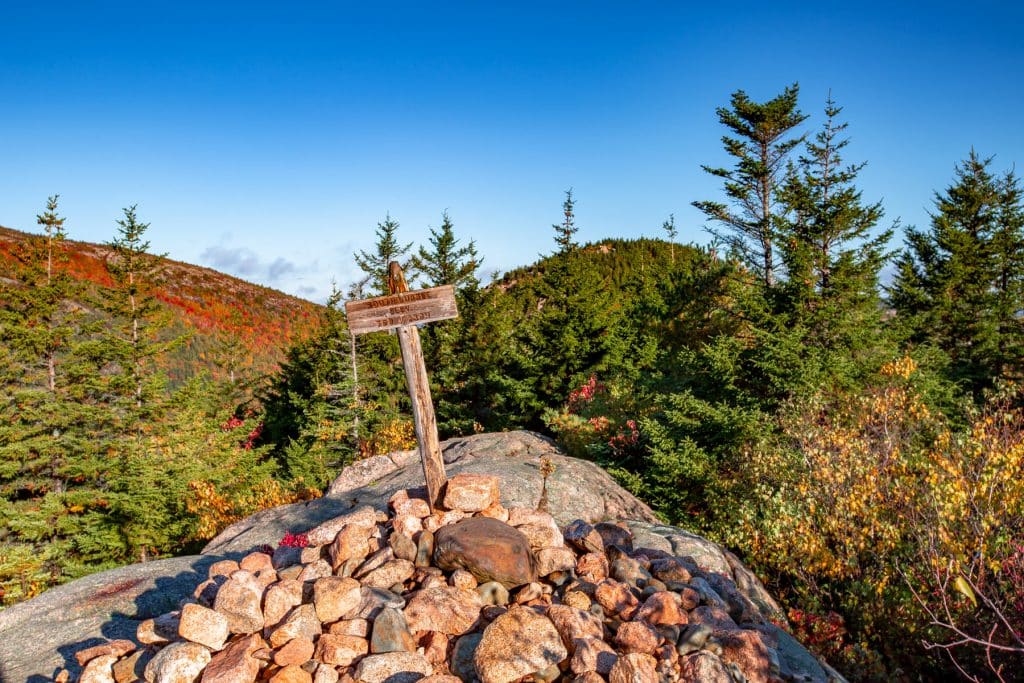
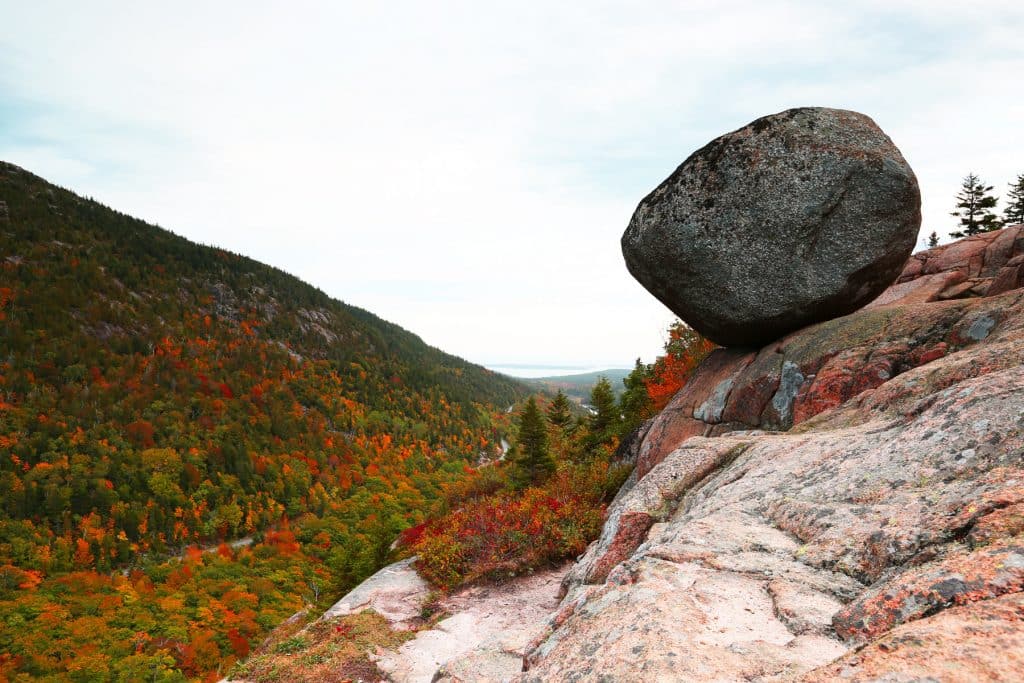
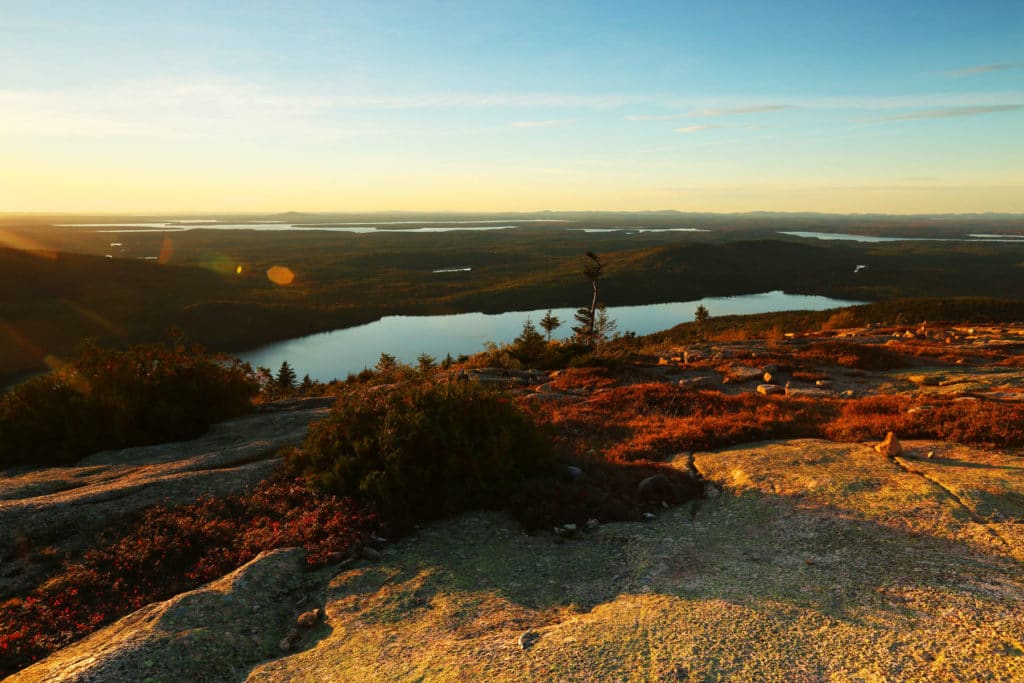

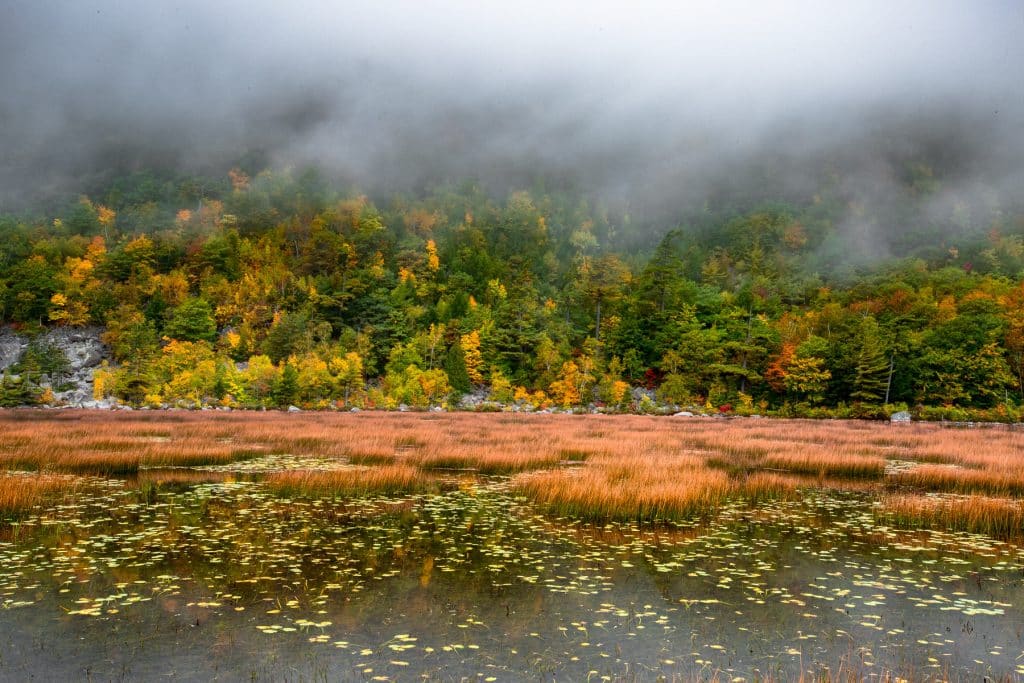
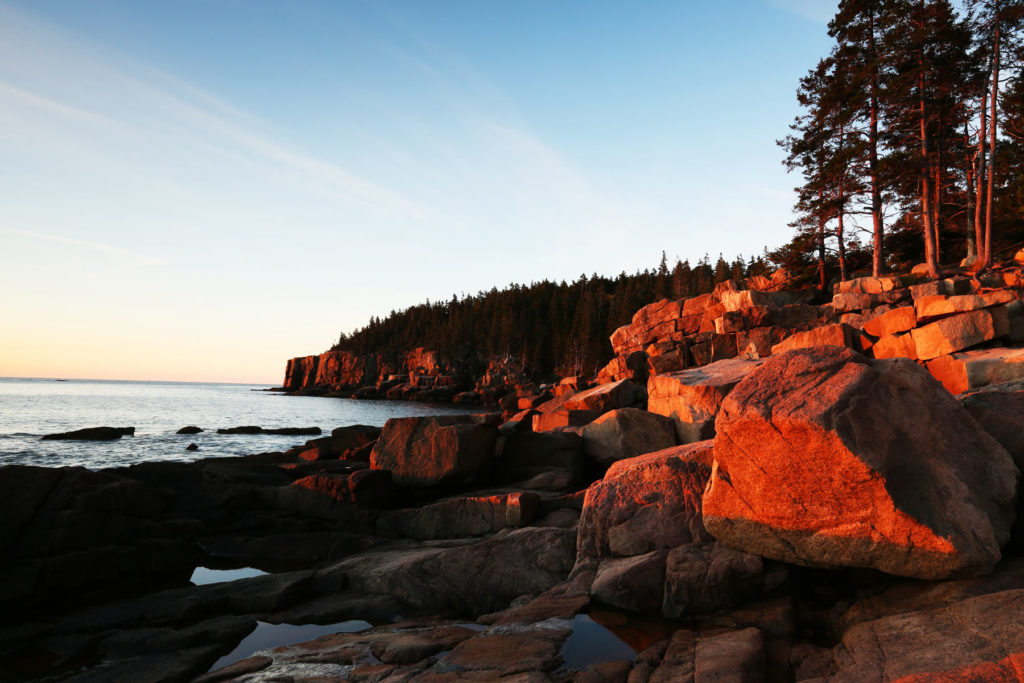
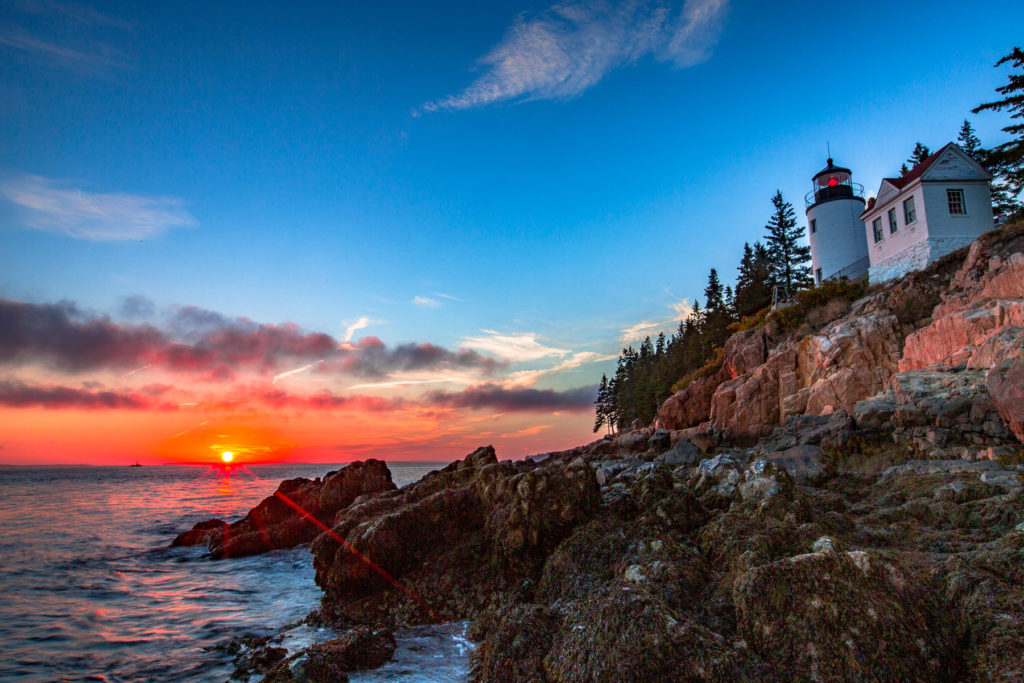
Nearby Attractions
- Katahdin Woods & Waters National Monument
- The Appalachian National Scenic Trail
- Roosevelt Campobello International Park
- Mt. Baxter State Park
- Saint Croix Island International Historic Site
Summary | Leave Us a Comment!
That’s a wrap! Hopefully you feel like you’ve gleaned everything you need to know for your next trip to Acadia National Park. Feel free to leave a comment below and let me know if you have any questions or thoughts!
Hope to see you on the trails sometime soon!
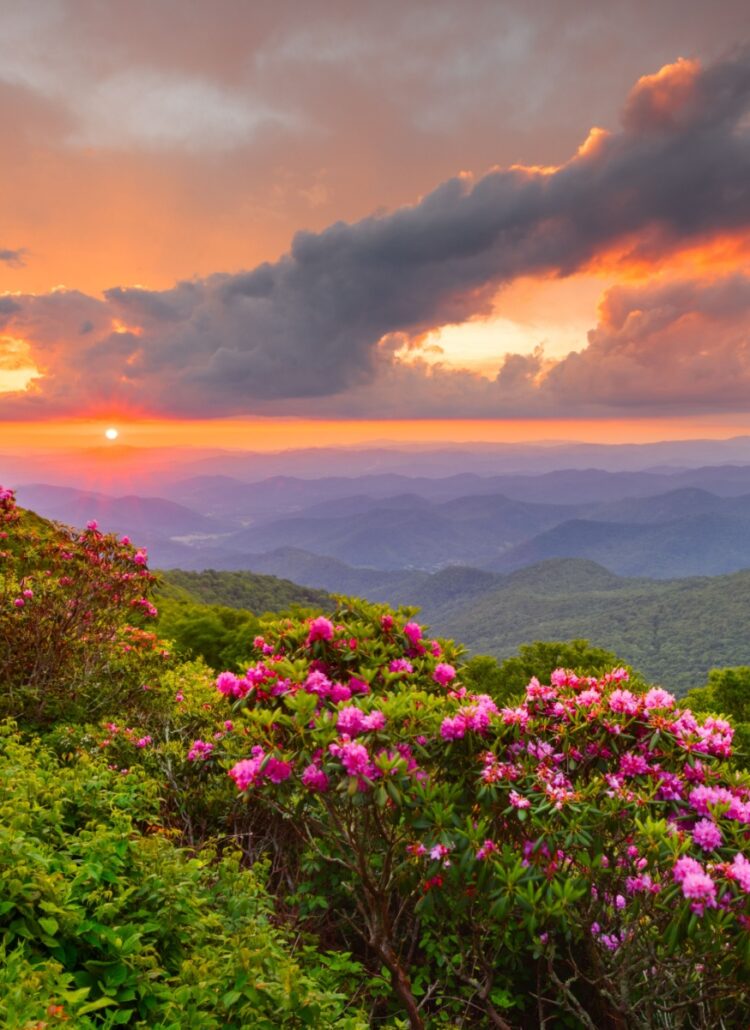
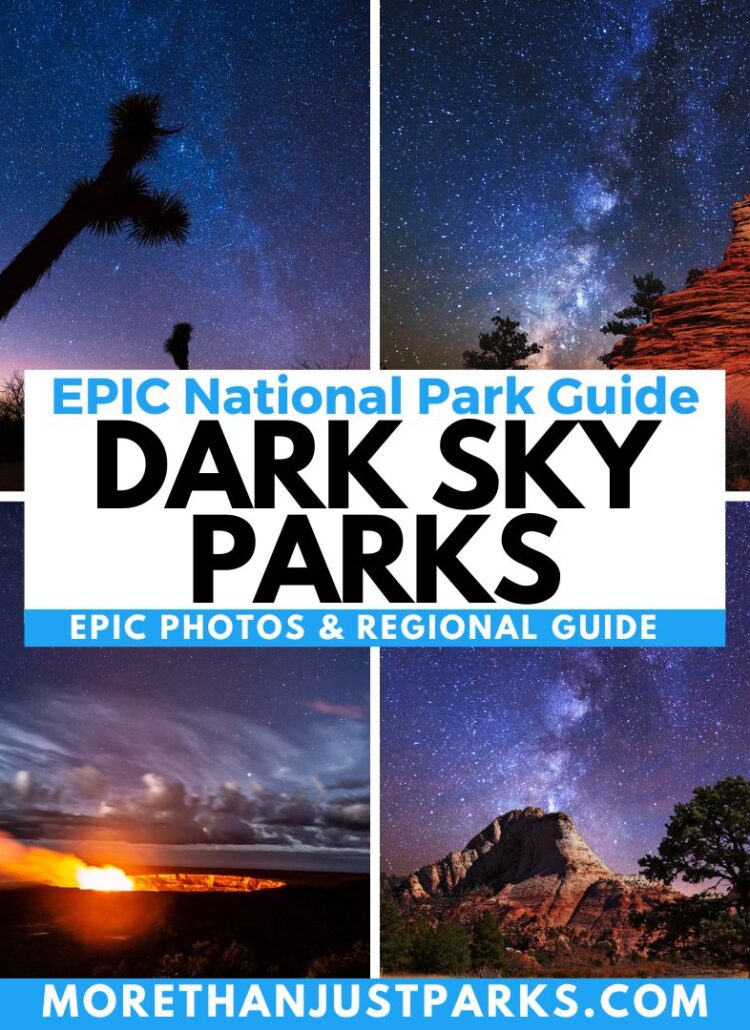
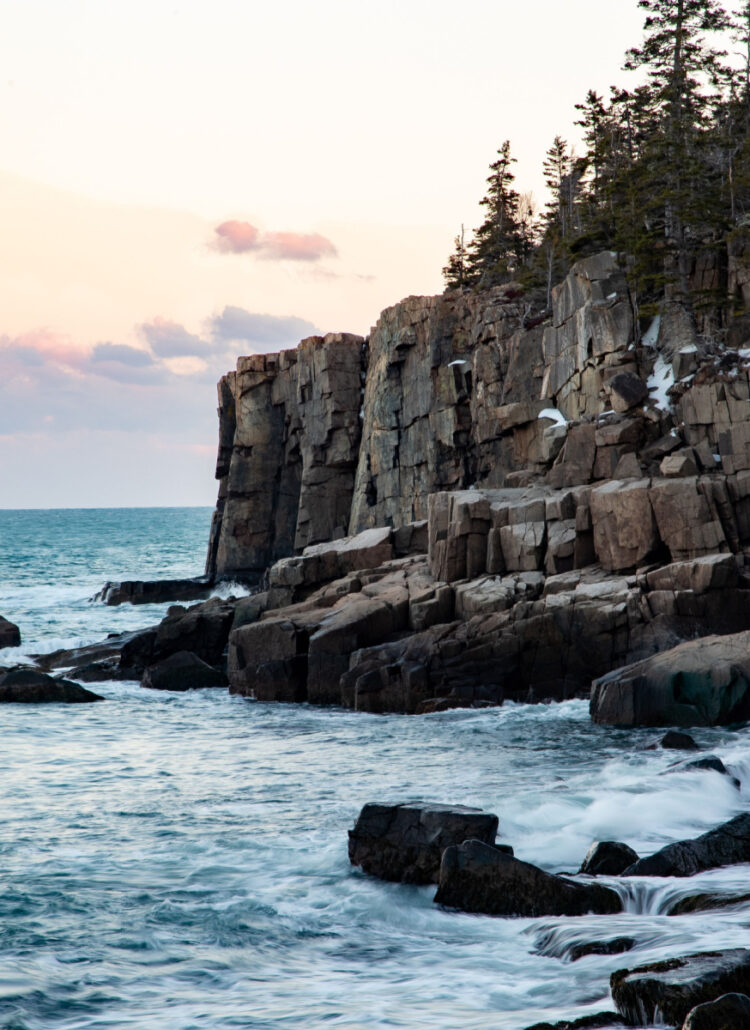
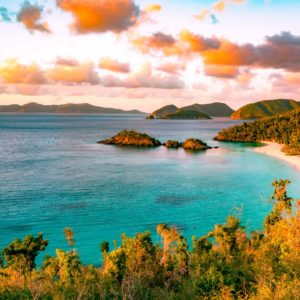

great place to visit, thank you for creating this article